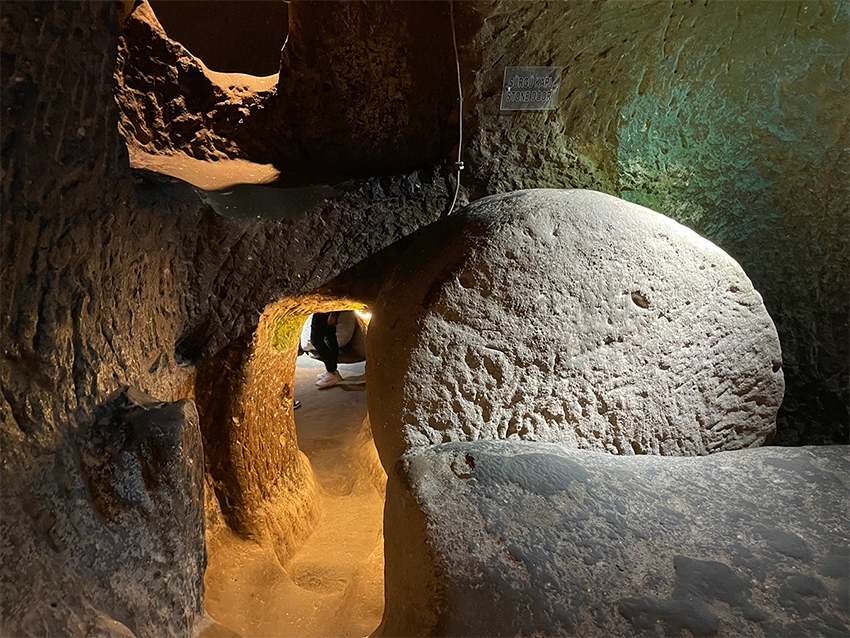Ozkonak Underground City
Özkonak Underground City
Background and Place in Christian History
Set on the northern slopes of Idis Mountain in the town of Özkonak near Avanos, this underground city stands out for its clever defensive design. Its earliest cavities may go back to the 4th century BCE and were later expanded in the Byzantine period when early Christian communities, inspired by Cappadocia’s monastic movement, sought safe refuges. During the Arab raids of the 7th to 9th centuries residents withdrew underground for long stretches.
Forgotten for centuries, the complex was rediscovered in 1972 when a local farmer traced disappearing irrigation water to a void below and it was opened to visitors the same year.

Plan and Defensive Engineering
Although compact in depth, Özkonak spreads widely. It is thought to have up to ten levels, with four open today and an overall depth of about 40 meters. Upper levels hold stables; the second and third levels include living spaces, kitchens, wine and grain stores, small prayer rooms and burial niches. Levels are linked by narrow corridors designed to slow intruders.
What makes Özkonak unique are the small apertures above the rolling stone doors. These “kill holes” allowed defenders to pour hot liquids or launch projectiles without opening the passage. Surveys have identified several wells, ventilation shafts and burial rooms. A remote fourth level, reached by a squeeze passage, likely served as a holding area or jail. Local lore also speaks of household tunnels that once connected homes to the underground network.

Living Spaces
Rooms are arranged almost like an apartment block, with larger family chambers and small side alcoves. Niche details for lamps, storage and even cradle hollows show a settlement designed for extended stays rather than brief hideouts.
Visiting Information
- Location: about 14 km from Avanos, roughly 35 km from Nevşehir. Signed turnoffs lead from the Avanos road to the site.
- Hours: typically open daily with longer summer hours and shorter winter hours. Last entry is shortly before closing.
- Tickets: entry is paid. Museum Pass for Türkiye is generally accepted. Check official sources on the day of travel for current pricing and hours.
- Facilities: parking, a small ticket booth and limited refreshments at the entrance.
Tips for a Smooth Visit
- Expect fewer stair sections than at deeper sites but many narrow corridors. Move single file in tight spots.
- If you are claustrophobic, avoid the narrowest lower passage.
- Wear sturdy shoes and bring a light layer, as underground temperatures stay cool year round.
- Photography works best with high ISO and no flash to preserve the tuff’s texture. Good subjects include the rolling stone doors, ventilation shafts and storage niches.
Around Özkonak
Combine your visit with Avanos pottery ateliers, a riverside walk along the Kızılırmak, or the Zelve Open Air Museum. Özkonak is often quieter than the larger underground cities, which makes it rewarding for photographers and history lovers.
Why It Matters
Smaller than Derinkuyu or Kaymaklı but no less ingenious, Özkonak shows how communities engineered a practical, defensible world beneath the surface and adapted it for real daily life.



